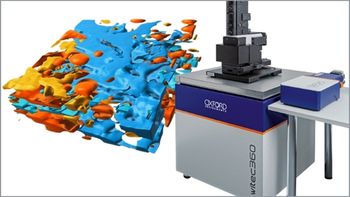
University of Wisconsin Graduate Student Wins 2024 Young Chemist Award
Metrohm USA announced Katelyn Michael as the 2024 winner of its Young Chemist Award for her work on the degradation of perfluorooctanesulfonic acid (PFOS).
On March 15, 2024, Metrohm USA announced that Katelyn Michael, a graduate student from the University of Wisconsin, Madison, is the 2024 winner of its Young Chemist Award. Michael’s work focuses on sustainable degradation of perfluorooctanesulfonic acid (PFOS), a persistent pollutant in the environment.
The Metrohm Young Chemist Award is presented annually. The recognition includes a prize of $10,000, which is awarded to a scientist whose research “transforms the landscape of chemistry” (1). It is currently open to students (undergraduate, graduate, post-graduate, doctorate) in the United States. Submissions for next year are currently open. Previous winners include Colby Ott in 2022, Pawan Jolly in 2020, and Jeff Lopez in 2019. (2).
Micheal’s paper, titled “Tandem Electrochemical Advanced Oxidative Processes to Effectively Degrade Perfluorooctanesulfonic Acid (PFOS),” addresses critical environmental challenges that stem from per- and polyfluoroalkyl substances (PFAS). Known as “forever chemicals” for being highly resistant to environmental degradation, PFAS chemicals can be incredibly dangerous to public and environmental health due to their bioaccumulative nature. Due to how widely used PFAS are in consumer products and industrial processes, such as cleaning products, water-resistant fabrics, and nonstick cookware, PFAS can be found in the blood of people and animals, as well as different food and environmental food products (3,4).
Based on a novel electrochemical approach, Michael improves upon existing methods in this study, aiming to greatly enhance the degradation efficiency of PFOS. Her methodology cycles between activation and degradation phases within the same cell, resulting in more complete degradation. Notably, her work utilizes a special mediated decoupled process to avoid side reactions.
According to Ed Colihan, the CEO of Metrohm USA, Michael’s research into PFAS degradation serves as a “beacon of hope” in the fight against PFAS. “The urgency and complexity of PFAS pollution demand our best minds and resources, and we are proud to reward research that leads us toward a cleaner, safer future,” he said in a statement about the award. Michael intends to further explore PFAS compound degradation and improve her system’s scalability. Her research holds promise for broader applications in environmental remediation.
To learn more about the Young Chemist Award and to submit someone you know, visit the
References
(1) Are You the Next Young Chemist? Metrohm USA Inc. 2024.
(2) Where Are They Now? Metrohm USA Inc. 2024.
(3) Chemicals: Perfluoroalkyl and Polyfluoroalkyl (PFAS) Substances. Wisconsin Department of Health Services 2024.
(4) PFAS Explained. United States Environmental Protection Agency 2023.
Newsletter
Get essential updates on the latest spectroscopy technologies, regulatory standards, and best practices—subscribe today to Spectroscopy.





